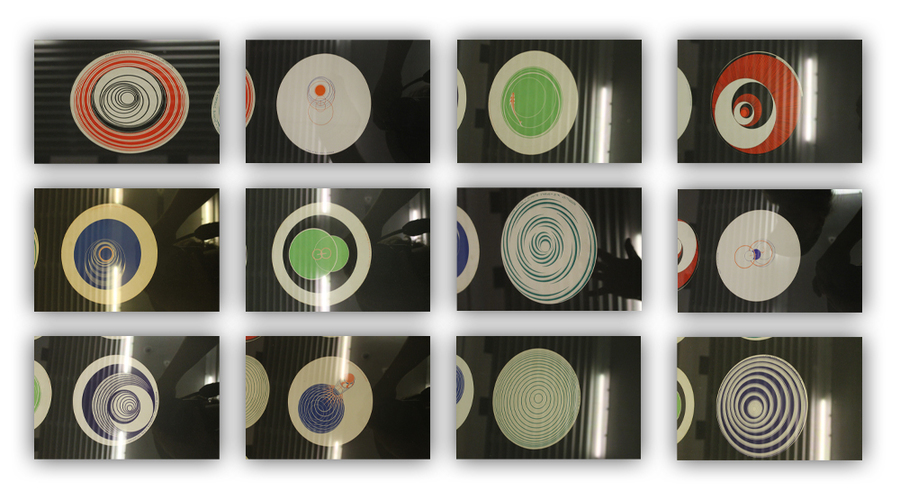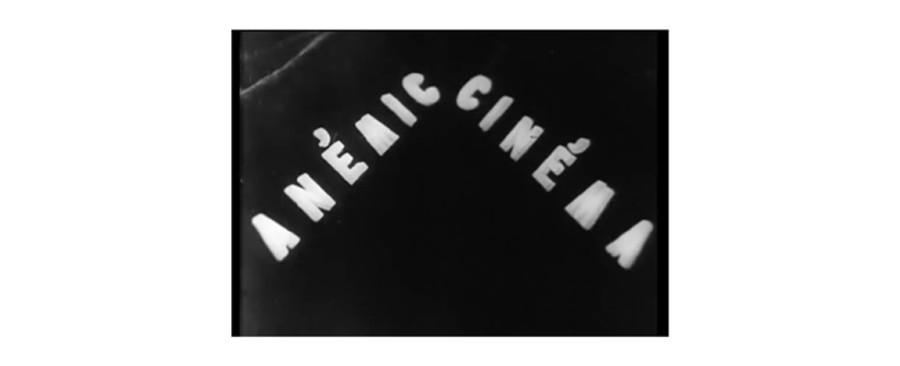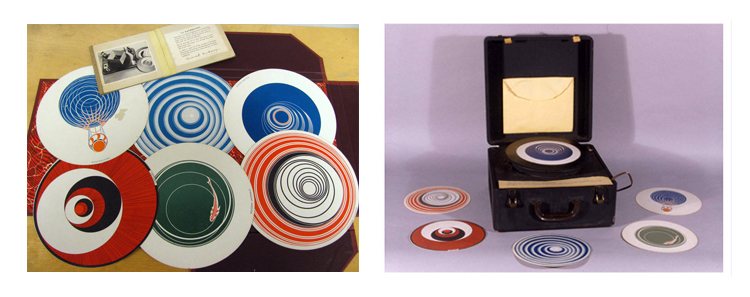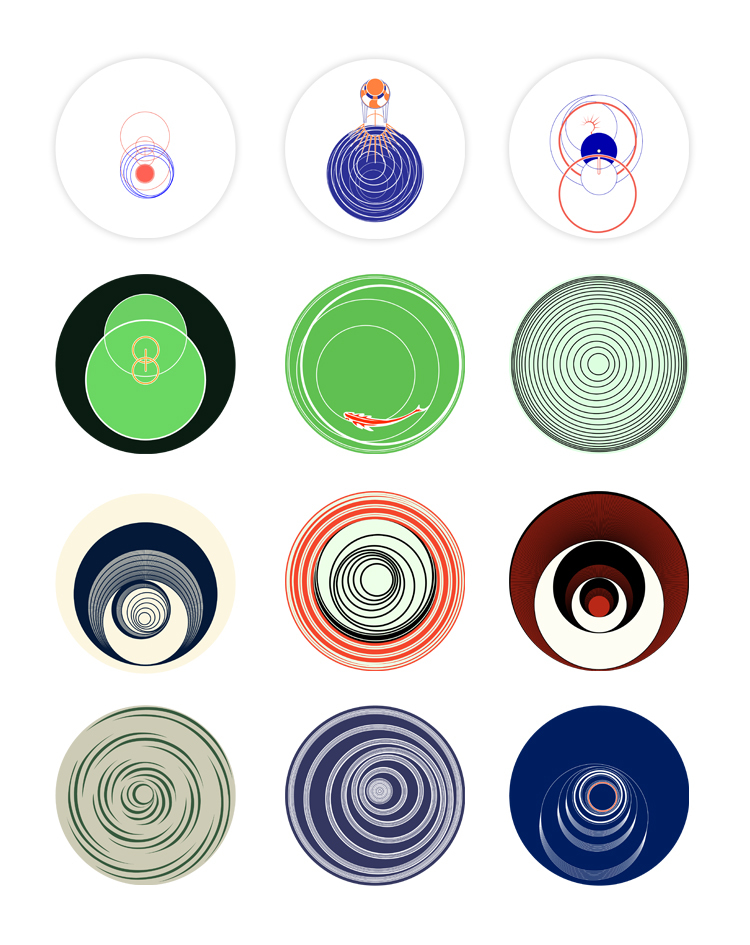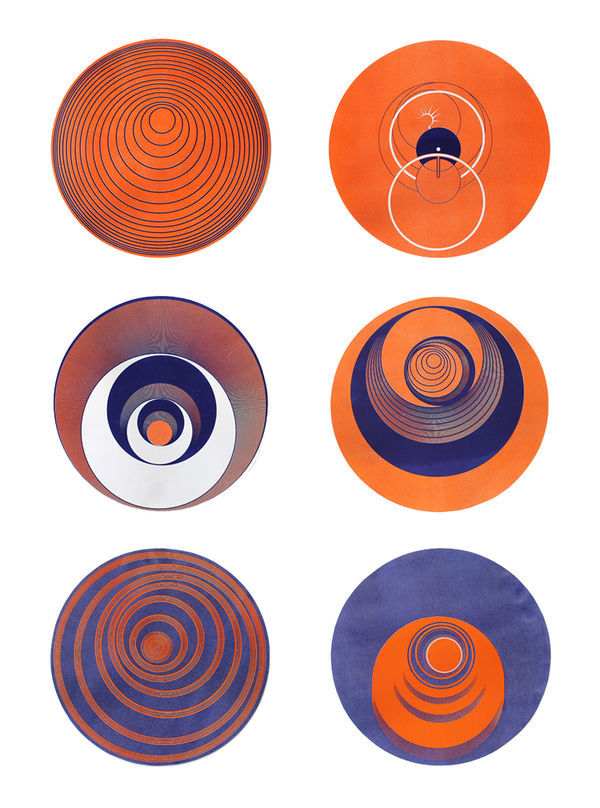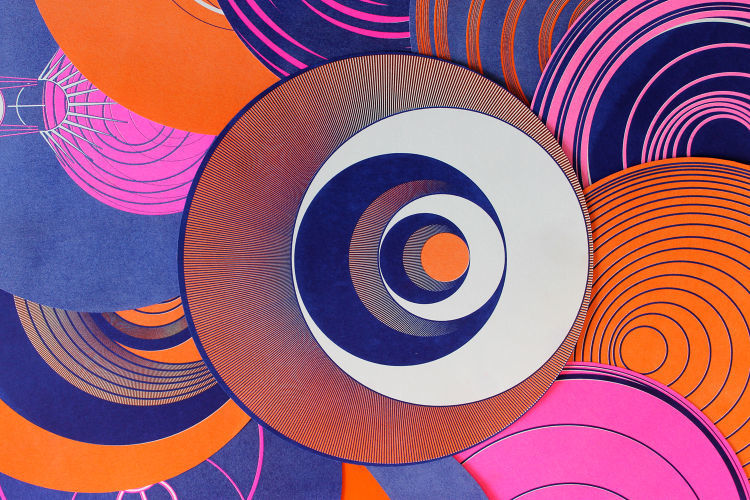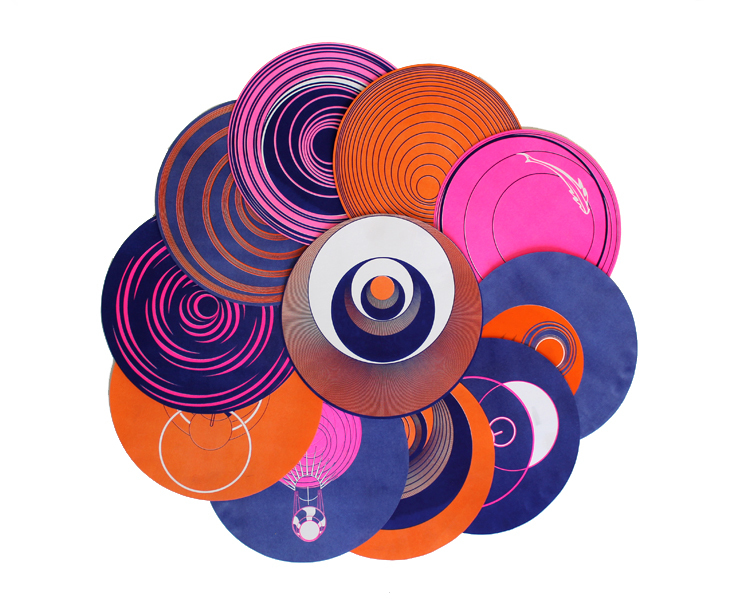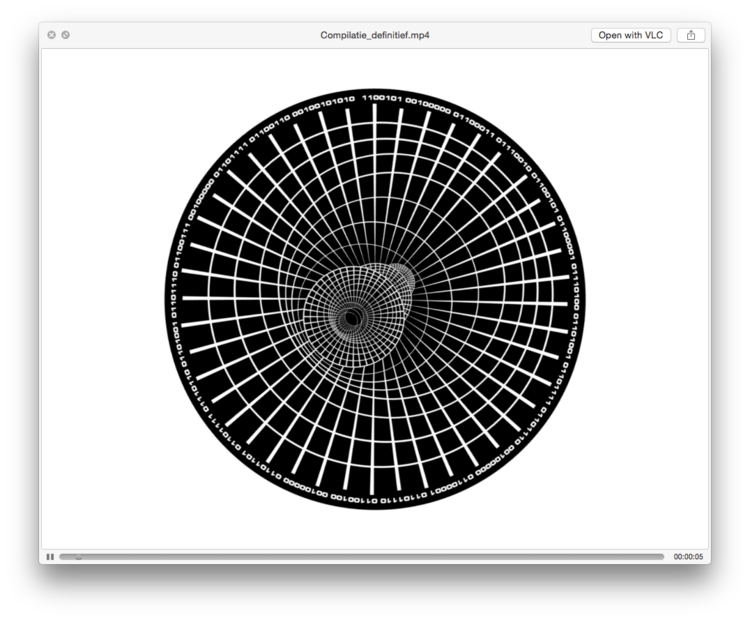Difference between revisions of "User:Christopher Noort"
| Line 271: | Line 271: | ||
=== Concept === | === Concept === | ||
| − | I want to use Duchamps hypnotic disks as a metaphor that tells the story of how we interact <br/> | + | I want to use Duchamps hypnotic disks as a metaphor that tells the story of how we interact <br/>with the possibility to acces the entirety of information known to man. I see an optical illusions as <br/>malfunctions of the brain. Something the brain can not cope with. The perceived image is misinterpreted, <br/>which is translated by the brain into a new image that differs from the original. An optical illusion is a <br/>solution for the brain to handle complex visual data. This humongous phenomenon called the internet is<br/>starting to get so big, it’s hard to comprehend all it’s information. All this data could / should be the solution<br/>to the majority of our problems as the human race, but is mainly used to look at photographs of cats. <br/>We have the possibility to learn skills on the web that can help is in every aspact of our everyday lives, <br/>yet we simply don’t do it. By using duchamps complex optical illusions, I hope too create a installation<br/>that shows the audience that the complexity of the world wide web. I want to confront people with the fact<br/>that this Jungle of Information has altered their appreciation for information as they waste their precious time<br/>by scrolling thru useless one’s and zero’s.My disks are a visual interpretation of the hypnotic and addicted state<br/>we’re in as a data consumer.</div> |
| − | with the possibility to acces the entirety of information known to man. I see an optical illusions as <br/> | ||
| − | malfunctions of the brain. Something the brain can not cope with. The perceived image is misinterpreted, <br/> | ||
| − | which is translated by the brain into a new image that differs from the original. An optical illusion is a <br/> | ||
| − | solution for the brain to handle complex visual data. This humongous phenomenon called the internet is<br/> | ||
| − | starting to get so big, it’s hard to comprehend all it’s information. All this data could / should be the solution<br/> | ||
| − | to the majority of our problems as the human race, but is mainly used to look at photographs of cats. <br/> | ||
| − | We have the possibility to learn skills on the web that can help is in every aspact of our everyday lives, <br/> | ||
| − | yet we simply don’t do it. By using duchamps complex optical illusions, I hope too create a installation<br/> | ||
| − | that shows the audience that the complexity of the world wide web. I want to confront people with the fact<br/> | ||
| − | that this Jungle of Information has altered their appreciation for information as they waste their precious time<br/> | ||
| − | by scrolling thru useless one’s and zero’s.My disks are a visual interpretation of the hypnotic and addicted state<br/>we’re in as a data consumer.</div> | ||
Revision as of 22:06, 29 October 2015
Contents
Digital Craft
Fantastic Forgeries
Blainville 1887 - Neuilly sur Seine 1968
Rotoreliefs (optische schijven / Optical Disks) 1935
Offsetlitho op karton Offset Lithograph on cardboard
De ‘Rotoreliefs’ tonen Maercel Duchamps interesse in het weergeven van beweging op het platte vlak. Wanneer de schijven met
een bepaalde snelheiden draaien, ontstaat een illusie van diepte. De film ‘Anémic Cinéma’ laat vroegere versies van deze ’Rotoreliefs’
zien in combinatie met tekstuele zinspelingen. Voor de kunstenaar zijn de ‘Rotoreliefs’ niet alleen een artistiek, maar ook een
wetenschappelijk experiment dat zich richt op de waarneming van de toeschouwer.
The ’Rotoreliefs’ display Marcel Duchamp’s interest in the representation of movement on a flat surface. When the discs are
spun at a certain speed they create the illusion of depth. The film Anémic Cinéma’ shows early versions of these
‘Rotoreliefs’ were an artistic and scientific experiment aimed at the viewer’s perception.
Why did I chose this work?
There are three reasons why I’m interested in Duchamp’s “Rotoreliefs“. The phenomenon ‘Optical Illusion’ is a
subject that always fascinated me, but never had the time to really do research on the subject. It’s a enormous
undiscovered world for me, that I can explore not only in a textual matter, but also in an experimental way.
This leads me to the second reason I want to dive into duchamp’s world. The ‘Rotoreliefs’ offer a perfect change
to combine Digital craft with my major in Graphic design. Instead of seeing the two studies as two separate
fields, I want to know if they can enhance each other. The last reason why I want to discover Duchamp’s work
is the sea of possibilities I see when I think of enhancing the work with current day technology. Not only can I
improve the complexity of the graphics on the disks, The way the disks could be made, showed, used, presented,
formed, placed in the current day and age are endless in possibilities.
Research
Anemic Cinema
https://en.wikipedia.org/wiki/Anemic_Cinema
Anemic Cinema or Anémic Cinéma (1926) is a Dadaist, surrealist, or experimental film made by Marcel Duchamp.
The film depicts whirling animated drawings—which Duchamp called Rotoreliefs—alternated with puns in French.
Duchamp signed the film with his alter ego name of Rrose Sélavy.
Rotoreliefs were a phase of Duchamp's spinning works. To make the optical "play toys" he painted designs on flat
cardboard circles and spun them on a phonograph turntable that when spinning the flat disks appeared 3-dimensional.
He had a printer run off 500 sets of six of the designs and set up a booth at a 1935 Paris inventors' show to sell them.
The venture was a financial disaster, but some optical scientists thought they might be of use in restoring 3-dimensional sight to people with one eye.[1]
In collaboration with Man Ray and Marc Allégret, Duchamp filmed early versions of the Rotoreliefs and they named the first film version Anémic Cinéma.
The Rotoreliefs are alternated with nine revolving disks with the following text in French, consisting of puns and alliteration by Duchamp
"Bains de gros thé pour grains de beauté sans trop de bengué." (BenGay was invented in France by Dr. Jules Bengué)
"L'enfant qui tète est un souffleur de chair chaude et n'aime pas le chou-fleur de serre-chaude."
"Si je te donne un sou, me donneras-tu une paire de ciseaux?"
"On demande des moustiques domestiques (demi-stock) pour la cure d'azote sur la côte d'azur.
"Inceste ou passion de famille, à coups trop tirés.
"Esquivons les ecchymoses des Esquimaux aux mots exquis.
"Avez-vous déjà mis la moëlle de l'épée dans le poêle de l'aimée?
"Parmi nos articles de quincaillerie paresseuse, nous recommandons le robinet qui s'arrête de couler quand on ne l'écoute pas."
"L'aspirant habite Javel et moi j'avais l'habite en spirale."
Optical Duchamp
http://www.abandon.nl/opical3.htm
In 1920 Duchamps special interest in motion and optical effects resulted in, what he called, 'rotoreliefs':
cardboard discs, printed with patterns creating an illusion of a 3D (spatial) object when turning around on
a 'phonograph' (record player) and especially for the rotorelief designed machines. Abstract figures, but
also objects such as a champagne glass or an egg-cup with an egg etc. where the 'motives' on these discs.
Maybe Duchamp hoped to realize the prophecy of Apollinaire that he was foreordained to 'be the conciliator of
art with people'. He rented a stand at the Concours Lépine, an annual fair for fancy domestic gadgets and general
inventions, and made a display with his rotoreliefs.
People were very interested, but nobody purchased any of the cardboard rotoreliefs: some rotoreliefs were for sale,
but there's reason to doubt this intention to be anything more than just another example of the inquisitive mind of Marcel Duchamp.
The rotorelief as an excursion to a non museal approach of the creative process however, is very real. Of course
Duchamp would humorously 'tone down' his act - as a result of his moderate (often referred to as nihilistic) philosophy
of life - but he wouldn't have made this 'invention' if he didn't take it very seriously as a creative process.
The 'déposée' (deposit) of the invention at the 'Tribunal de commerce de la Seine' in 1935 has to be -
almost beyond doubt - viewed in the same way: as an attempt to a non museal creative process.
In 1926 he also made a film "Anemic Cinema", in collaboration with Man Ray, based on the rotoreliefs and additional textual material.
Documentaries and other moving pictures
https://www.youtube.com/watch?v=7CFQY0Yf1iI
Duchamp interviews
https://www.youtube.com/watch?v=Bwk7wFdC76Y
Marcel Duchamp 1968 BBC interview
https://www.youtube.com/watch?v=bMAYHxqTBM8
Duchamp Docu
https://www.youtube.com/watch?v=1b1egysFRoY
Understanding contemporary Art
https://www.youtube.com/watch?v=upvYAAh8RuU
MARCEL DUCHAMP – ANEMIC CINEMA
https://www.youtube.com/watch?v=upvYAAh8RuU
Rotorelief (Duchamp) – ‘Laterne chinoise’ (drehende Kreise)
https://www.youtube.com/watch?v=K_8fjd82v9s
Marcel Duchamp, "Roto Relief: Optical Discs, 1953". A replica of a 1935 original. Spotted at the Norton Simon Museum of Art in Pasadena.
https://www.youtube.com/watch?v=G_XDJ0QRgxE
Rotorelief Disk 3D effect
Remake
i've managed to recreate all the Duchamp disks. The disks are recreated in Illustrator
and therefore all the disks are in Vector. This means I can resize them in every possible size.
Realisation
Re-interpretation
Therefore my version of the disk could be way more complicated and precise. By making my own disks from scratch I could study the creation
C O N C E P T U A L L A Y E R
context or reason behind these complex shapes and forms. By adding a conceptual layer to the work - something Duchamp didn't have,
as he described the work as a visual experiment - I could define the things I was making and give deeper meaning too my 'art'.
Instead of presenting something that was visually entertaining too watch; I now saw the opportunity to communicate something with the audience
>>>>>>>> CLICK THIS LINK FOR A VIDEO OF THE FINAL DISKS <<<<<<<
Concept
I want to use Duchamps hypnotic disks as a metaphor that tells the story of how we interactwith the possibility to acces the entirety of information known to man. I see an optical illusions as
malfunctions of the brain. Something the brain can not cope with. The perceived image is misinterpreted,
which is translated by the brain into a new image that differs from the original. An optical illusion is a
solution for the brain to handle complex visual data. This humongous phenomenon called the internet is
starting to get so big, it’s hard to comprehend all it’s information. All this data could / should be the solution
to the majority of our problems as the human race, but is mainly used to look at photographs of cats.
We have the possibility to learn skills on the web that can help is in every aspact of our everyday lives,
yet we simply don’t do it. By using duchamps complex optical illusions, I hope too create a installation
that shows the audience that the complexity of the world wide web. I want to confront people with the fact
that this Jungle of Information has altered their appreciation for information as they waste their precious time
by scrolling thru useless one’s and zero’s.My disks are a visual interpretation of the hypnotic and addicted state
we’re in as a data consumer.
